EMA vs FDA Labeling Difference Calculator
Understand Key Labeling Differences
This tool estimates how a drug's labeling might differ between EMA and FDA based on clinical evidence, patient population, and regulatory philosophy. Enter the details to see where differences are most likely to occur.
Enter your selections above to see a comparison of EMA and FDA labeling differences.
When a new drug hits the market in the U.S. or the EU, the label you read isn’t just a piece of paper-it’s the result of two very different regulatory philosophies. The EMA and FDA both approve life-saving medicines, but their labeling rules can lead to wildly different instructions for doctors and patients. If you’re a pharmacist, clinician, or someone working in global drug development, ignoring these differences isn’t an option-it’s a risk.
Why EMA and FDA Labels Don’t Match
You might assume that since both agencies use the same clinical trial data, their labels would be nearly identical. But that’s not how it works. The EMA and FDA interpret evidence differently. In one analysis of 21 drug approvals where both agencies had access to the same data, more than half the differences in approved uses came from how each agency judged the strength of that data. One agency saw enough proof to approve a new use; the other didn’t. Take oncology drugs as an example. The EMA is more willing to approve treatments based on surrogate endpoints-like tumor shrinkage-when patients have no other options. The FDA tends to demand clearer proof of survival benefit or quality-of-life improvement. This isn’t about who’s stricter; it’s about how each system weighs uncertainty.What’s in the Label? PRO Claims and Patient Voices
One of the biggest gaps shows up in Patient-Reported Outcome (PRO) claims. These are statements on the label about how a drug affects how patients feel or function-like reduced fatigue, improved mobility, or better sleep. Between 2006 and 2010, 47% of drugs approved by both agencies had at least one PRO claim from the EMA. Only 19% got one from the FDA. For symptom-based claims-like "reduces pain"-there was some overlap. But when it came to functional claims-"helps patients return to daily activities"-the EMA approved them far more often. Why? The EMA has a clearer framework for evaluating patient-reported data. The FDA, until recently, treated these claims as secondary. That’s changing, but slowly.Pregnancy and Lactation: Different Words, Different Risks
If you’ve ever read a drug label for a pregnant patient, you’ve probably seen one of these: "Use only if benefit justifies risk" or "Not recommended during pregnancy." The exact wording matters. In a 2023 study comparing labels for three drugs with human pregnancy data, the FDA and EMA used completely different risk communication styles. The FDA often defaults to caution, even when data suggests low risk. The EMA uses standardized phrases that acknowledge uncertainty without shutting down use entirely. One drug’s label said the FDA "did not recommend" use in pregnancy, while the EMA simply stated the known risks-without a blanket warning. For doctors, this means one label might lead to avoiding a drug altogether, while the other allows for shared decision-making.Language: The Hidden Cost of Approval
Submitting a drug to the FDA means one language: English. Submitting to the EMA means 24. Every package insert, patient leaflet, and dosing guide must be translated into every official EU language-German, Polish, Swedish, Greek, and 20 others. This isn’t just a paperwork headache. It adds 15-20% to development costs, according to industry estimates. The FDA doesn’t require translations because it only operates in one country. The EMA serves 27 member states with 24 official languages. Even if a drug is approved in France, the label must be available in Hungarian, Maltese, and Lithuanian. That’s why many companies delay EU approval until after U.S. launch-translation takes months.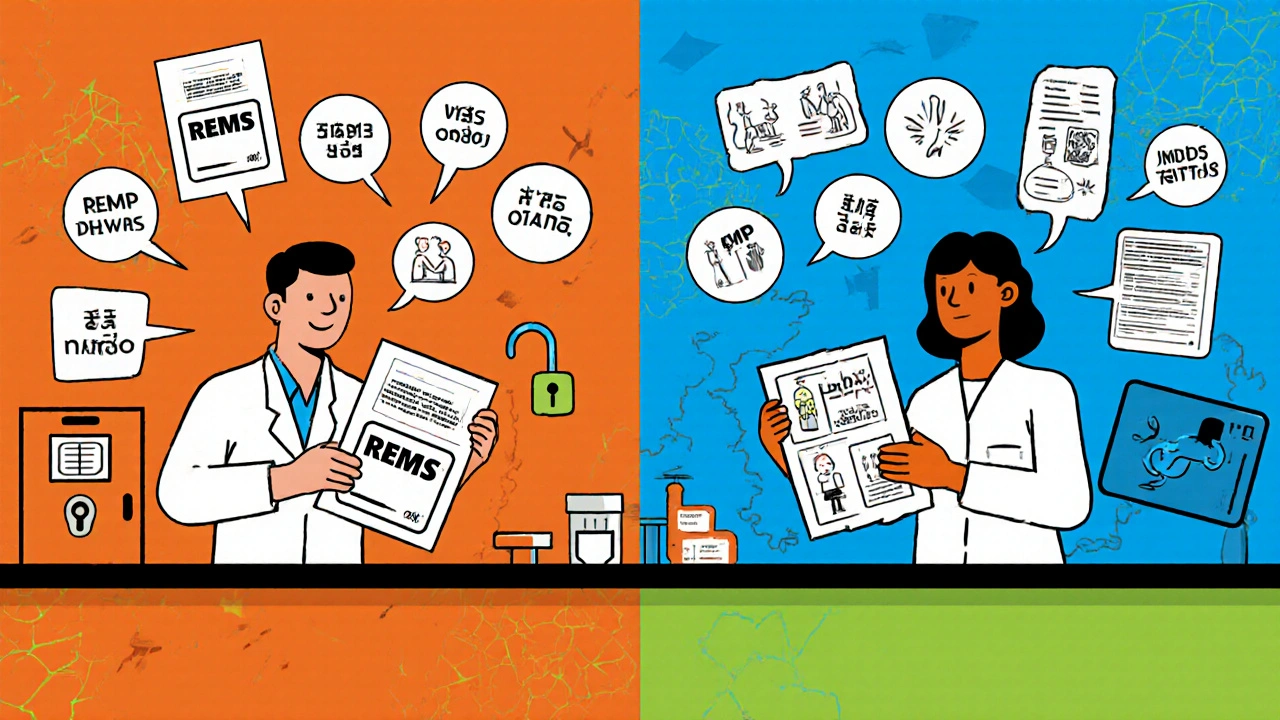
Risk Management: REMS vs RMPs
When a drug has serious safety risks, both agencies require extra safeguards. But how they do it couldn’t be more different. The FDA uses Risk Evaluation and Mitigation Strategies (REMS). These are rigid, legally enforceable systems. For some drugs, that means only one distributor can supply it. For others, doctors must complete training before prescribing. Pharmacies must be certified. It’s a full infrastructure. The EMA uses Risk Management Plans (RMPs). These are more flexible. Companies submit a plan outlining how they’ll monitor risks-through registries, educational materials, or periodic safety reports-but they’re not forced into a single system. There’s no mandatory training or exclusive distribution. The EMA trusts companies to follow through. This difference affects how quickly drugs get to market. A drug with a complex REMS might take longer to launch in the U.S. because the entire supply chain has to be built. In the EU, approval can come faster because the company just needs to promise they’ll track safety.Approval Speed and First-Cycle Success
The EMA approves more drugs on the first try. In one study, 92% of applications passed initial review at the EMA, compared to 85% at the FDA. Why? The FDA turns down more applications upfront-not because the drugs are worse, but because they demand more complete data before approval. The EMA is more willing to approve drugs with some uncertainty, especially for rare diseases. It has a special "exceptional circumstances" pathway for ultra-rare conditions where full clinical trials aren’t possible. The FDA doesn’t have an exact equivalent. Instead, it often grants accelerated approval with strict post-market studies. That means a drug might launch faster in the EU, but the U.S. might require more data before approval.What This Means for Global Pharma
If you’re a pharmaceutical company, you’re not just developing a drug-you’re building two separate labeling strategies. One for the U.S., one for Europe. That means:- Two sets of clinical data packages
- Two rounds of regulatory submissions
- Two sets of translations
- Two different risk management systems
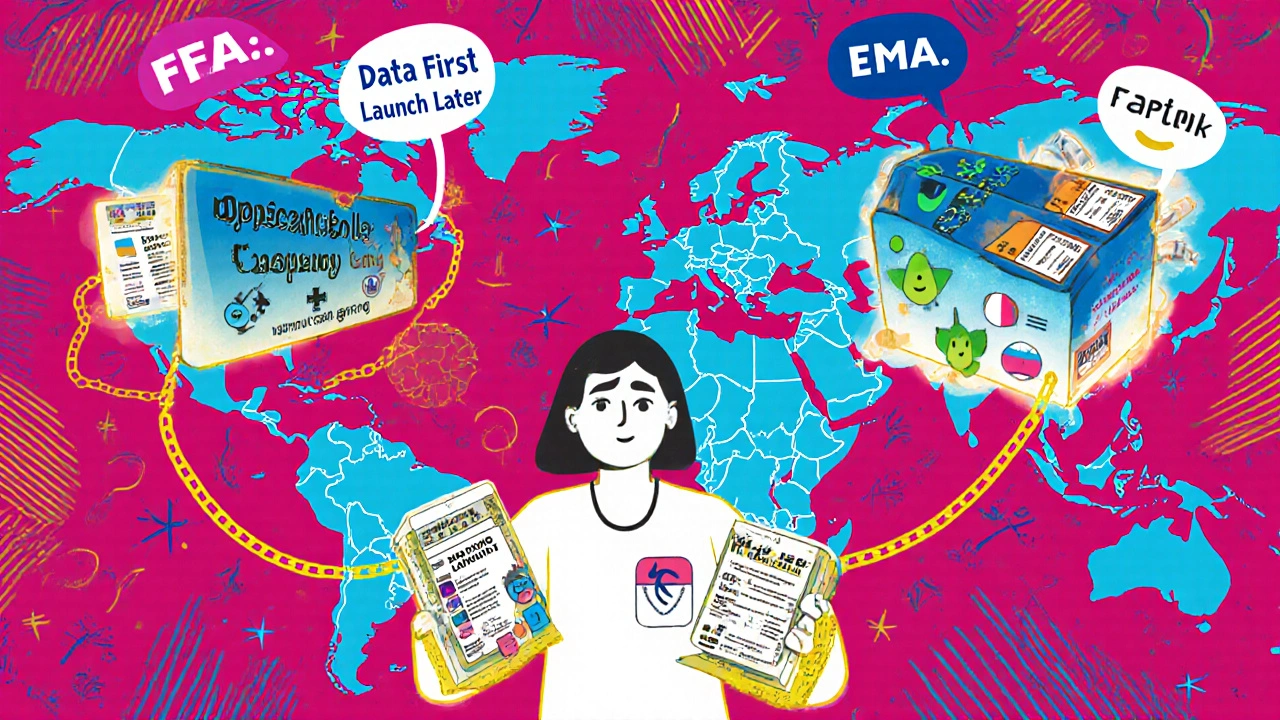
Are We Getting Closer?
There’s been progress. The International Council for Harmonisation (ICH) has pushed for alignment on data formats, safety reporting, and clinical trial design. The FDA and EMA now share confidential review data under a 2020 confidentiality agreement. Joint scientific advice sessions have jumped 47% since 2018. But harmonization has limits. Legal frameworks don’t change overnight. The FDA answers to U.S. Congress. The EMA answers to the European Commission and 27 national regulators. Cultural attitudes toward risk differ too. Americans tend to want clear, absolute warnings. Europeans are more comfortable with nuanced, probabilistic language. Experts predict the gap will narrow-but not disappear. The next decade will see more alignment on data standards and digital labeling, but the core differences in philosophy will remain.What Should You Do?
If you’re a clinician: Don’t assume a drug’s U.S. label tells you everything you need to know about its use in Europe. Check the EMA’s SmPC if you’re treating a patient who got the drug abroad. If you’re in pharma: Build labeling into your development plan early. Don’t wait until approval to think about translations or risk systems. Design your clinical trials with both agencies in mind. If you’re a patient: Understand that the same drug might have different instructions depending on where you live. Talk to your pharmacist or doctor if you’re unsure why your label says something different than what you’ve seen online.Final Thought
Drug labeling isn’t just about safety-it’s about trust. The EMA and FDA both want to protect patients. But they build that trust in different ways. One uses rigid rules. The other uses flexible frameworks. Neither is right or wrong. But if you’re working across borders, you need to know which one you’re dealing with.Why do EMA and FDA labels differ even when they approve the same drug?
They use the same clinical data, but interpret it differently. The EMA often accepts more uncertainty and allows broader indications, especially for rare diseases. The FDA tends to demand stronger proof of benefit before approving new uses. Differences in legal frameworks and risk tolerance also shape how each agency writes warnings and instructions.
Which agency approves drugs faster, EMA or FDA?
The EMA has a higher first-cycle approval rate-92% compared to the FDA’s 85%. That’s because the FDA often requests more data upfront, leading to more initial rejections. The EMA is more willing to approve drugs with incomplete data, especially for rare conditions, and then require post-marketing studies.
Does the FDA accept drug labels in languages other than English?
No. The FDA requires all submissions and final labels to be in English only. The EMA, however, requires all labeling to be translated into all 24 official languages of the European Union. This makes EU approval significantly more complex and costly for manufacturers.
What are PRO claims, and why do EMA and FDA differ on them?
PRO claims are statements on drug labels about how a medicine affects how patients feel or function-like reduced pain, improved energy, or better sleep. The EMA approves these claims much more often than the FDA. Between 2006 and 2010, 47% of drugs approved by both agencies had at least one PRO claim from the EMA, but only 19% from the FDA. The EMA has clearer guidelines for evaluating patient-reported data; the FDA historically treated these as secondary.
How do EMA and FDA handle drug safety risks differently?
The FDA uses REMS (Risk Evaluation and Mitigation Strategies), which are strict, legally enforced systems-like mandatory doctor training or exclusive distributor networks. The EMA uses RMPs (Risk Management Plans), which are more flexible. Companies submit plans to monitor risks, but aren’t forced into specific systems. This makes EMA approvals faster to launch but requires more ongoing monitoring.
Can a drug approved in the EU be used the same way in the U.S.?
Not always. Even if a drug is approved in both regions, its approved uses, dosing instructions, warnings, and safety precautions may differ. For example, a drug might be labeled for a specific cancer type in the EU but not in the U.S., or carry a stronger pregnancy warning in the U.S. Always check the local label and consult prescribing guidelines.
Do EMA and FDA share data to reduce labeling differences?
Yes. Since 2020, the FDA and EMA have had a confidentiality agreement allowing them to share internal review data. They also hold joint scientific advice meetings, which have increased by 47% since 2018. But despite this collaboration, each agency still makes independent decisions based on its own legal and cultural framework, so labeling differences persist.
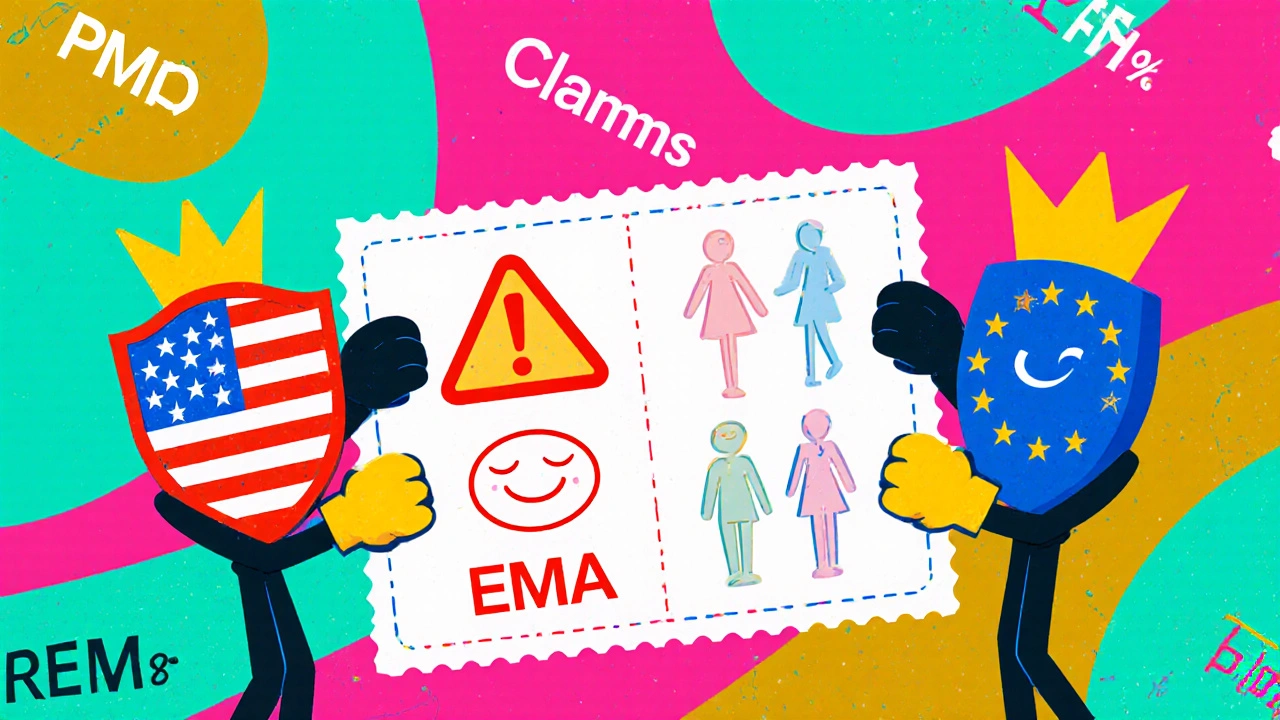



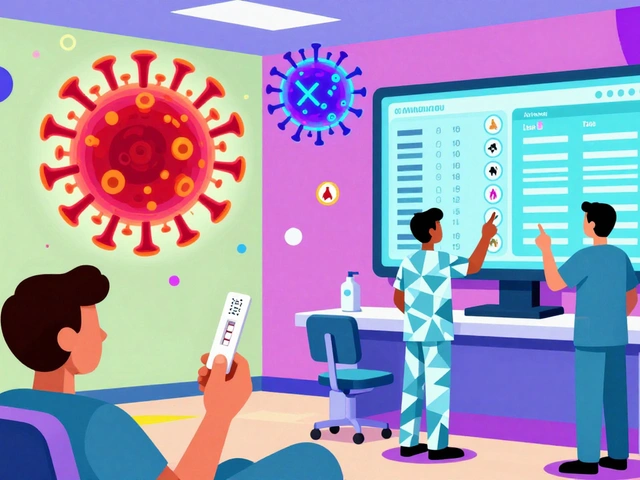
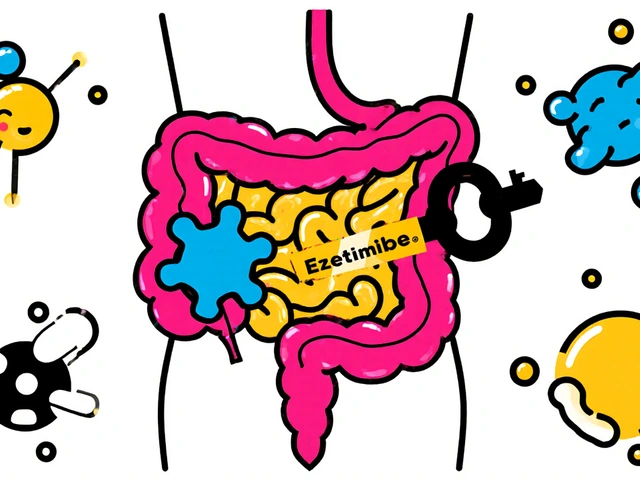
Brandon Lowi
November 18, 2025 AT 17:04Let’s be real-America doesn’t need to bow to European bureaucracy. The FDA’s standards aren’t ‘strict,’ they’re *sacred*. You want a drug approved? Prove it saves lives-not just shrinks tumors while some patient sips chamomile tea and calls it ‘improved quality of life.’ EMA’s ‘flexible framework’? That’s just regulatory laziness dressed up as compassion. We don’t gamble with lives. We demand proof. End of story.
Joshua Casella
November 19, 2025 AT 13:59These differences aren’t about nationalism-they’re about cultural values. The U.S. prioritizes certainty. Europe tolerates ambiguity. Both have merit. The key is transparency: if you’re a clinician treating a patient on a European-prescribed drug, always cross-check the SmPC. It’s not about which system is better-it’s about knowing which one you’re working with. Simple.
Richard Couron
November 19, 2025 AT 21:55YOU THINK THIS IS ABOUT REGULATORY PHILOSOPHY? HA. It’s the WHO and Big Pharma pushing a globalist agenda to erase national sovereignty in medicine. The FDA’s ‘slow’ process? That’s because they’re fighting off EU-funded lobbyists who want to force us to accept ‘uncertain’ data. And don’t get me started on the 24 translations-this is a Trojan horse for linguistic colonization. They’re slowly replacing English with multilingual bureaucracy so we can’t even read our own prescriptions. Wake up.
Kevin Jones
November 21, 2025 AT 18:14Regulatory epistemology: FDA = empiricist. EMA = pragmatist. The former demands ontological certainty; the latter accepts probabilistic utility. PRO claims? A symptom of ontological drift in clinical outcomes research. REMS vs RMP? Institutional path dependency. Translation costs? A structural artifact of federalism vs supranationalism. The divergence isn’t inefficiency-it’s divergence.
Premanka Goswami
November 22, 2025 AT 04:58They’re lying. The FDA and EMA are both controlled by the same 7 pharmaceutical conglomerates. The ‘differences’ are staged to keep us confused so we don’t realize the real drug pricing scam is global. One agency says ‘approve,’ the other says ‘wait’-but the price? Always the same. They want you arguing over labels while the real theft happens in the supply chain.
Alexis Paredes Gallego
November 23, 2025 AT 10:46Wait-so the EMA lets you say a drug ‘helps patients return to daily activities’ but the FDA won’t? That’s not science, that’s socialism. Next they’ll be approving antidepressants based on ‘how patients feel about Tuesdays.’ The FDA is the last bastion of truth in medicine. The EMA is just a focus group with a stamp. And don’t even get me started on the 24 languages-why should a Lithuanian pharmacist need to read a 300-page leaflet about a drug designed for American obesity? This isn’t healthcare. It’s performance art.
Saket Sharma
November 23, 2025 AT 16:17EMA’s ‘flexibility’ is a liability. RMPs are paper tigers. Companies submit plans they never implement. FDA’s REMS? Enforceable. Binding. Legal. You want safety? You want accountability? You want zero tolerance for corporate negligence? Then support the FDA model. The EU’s approach is corporate welfare disguised as patient-centric care. And PRO claims? Data noise. Real medicine measures survival-not ‘energy levels’.
Shravan Jain
November 24, 2025 AT 01:41Let me be clear: the EMA's approach is statistically unsound. Accepting surrogate endpoints without robust survival correlation is not innovation-it is methodological malpractice. The FDA's reluctance is not bureaucracy-it is epistemic rigor. Translation costs? A non-issue. The real cost is the erosion of scientific integrity. The EU's model incentivizes mediocrity under the banner of accessibility. This is not harmonization. It is capitulation.
Alex Boozan
November 25, 2025 AT 01:20And yet-every single time a U.S. patient gets denied access to a life-extending drug because the FDA demands another year of trials, the EMA’s approved it. For six months. In 14 countries. The FDA’s ‘rigor’ is a luxury. It’s not protecting patients-it’s protecting patent windows. The EU isn’t reckless. It’s responsive. And yes, I’ve seen patients die waiting for the FDA to ‘get its data right.’
mithun mohanta
November 26, 2025 AT 19:44Let’s not pretend this is about science. The EMA speaks to the soul of the patient-their fatigue, their sleep, their dignity. The FDA speaks to the spreadsheet. One measures humanity. The other measures ROI. And the 24 languages? That’s not cost-it’s cultural sovereignty. You think English is the default of truth? That’s colonial thinking. The future of medicine isn’t monolingual. It’s multilingual. And if you can’t handle that? Maybe you’re not ready to practice it.